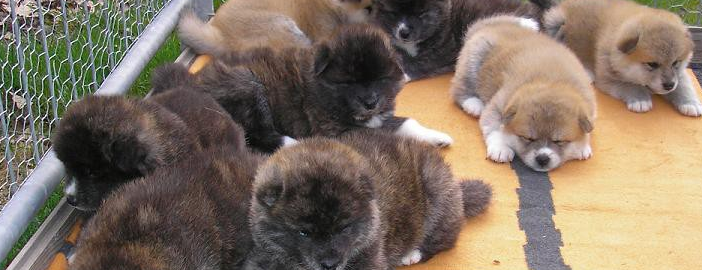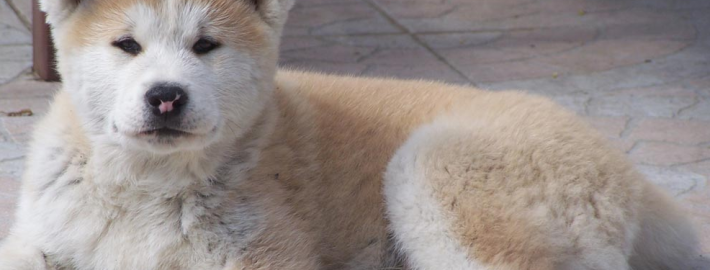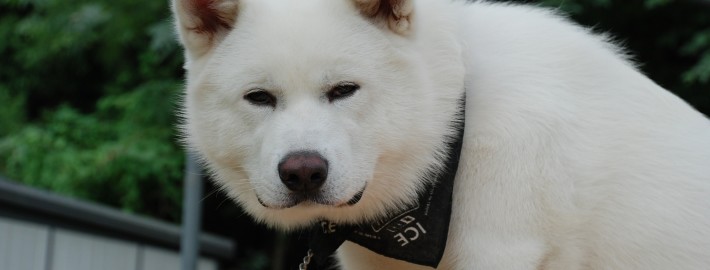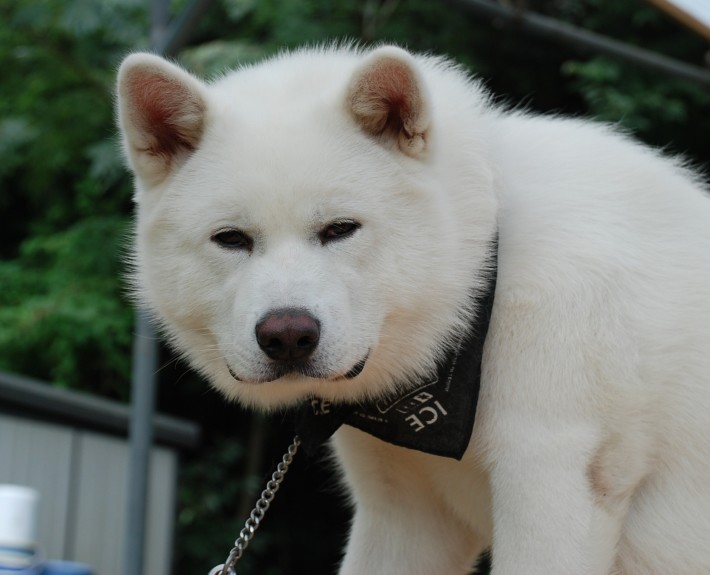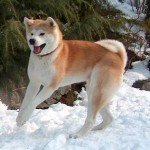What makes the Tibetan Mastiff Unique?
A powerful, heavy, but athletic dog, the Tibetan Mastiff is built to combine strength and agility. Its body is slightly longer than tall. Its walk is slow and deliberate, while its trot is powerful and light-footed. The whole appearance is impressive, with a solemn but kindly expression. The coat, which is noticeably heavier in males than in females, is thick and fairly long, especially around the neck and shoulders. The tail is densely coated and the hind legs well feathered on the upper parts. The hair is coarse, straight and hard, standing off from the body. It carries a heavy undercoat in cold weather, but little undercoat in warm weather. This combination of coat types allows the Tibetan Mastiff to endure the extremes of Tibetan weather. As befitting their long past as a solitary sentry and protector, Tibetan Mastiffs are independent, strong willed, and territorial. They are aloof toward strangers but devoted to their family. Proper socialization is essential so that they will accept strangers and not become overly suspicious. They are gentle and patient with their children, but may guard their home against visiting children who may appear to be threatening the family children. They are generally good with other dogs and are rarely dog aggressive. (In Tibet, they were often kept with Lhasa Apsos.) Most Tibetan Mastiffs are good with other animals.
Breed Groups
- Working Dog Breed
- Large Size
Page Contents
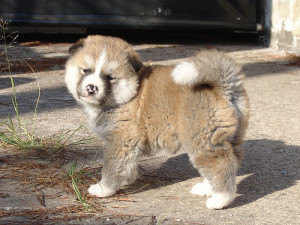
Is the Tibetan Mastiff Right For You?
Extremely independent and intelligent, the Tibetan Mastiff may have its own agenda, so for safety, they should be kept contained when exercised. Although active while out of doors, they are usually fairly quiet in the house. Prospective owners should note – the breed is highly protective of their family and property, so it may be difficult to bring people into your home. Finally, they shed their coat only once a year, but regular brushing is still required. If you are considering purchasing a Tibetan Mastiff puppy, learn more. *Working Group; AKC recognized in 2006.
*Minimum of 24-26 inches tall at the shoulder.
*Family and property guardian.
In 5 Words
- Alert
- Docile
- Friendly
- Responsive
- Courgeuos
Characteristics
Learn About the Tibetan Mastiff
Description
Tibetan Mastiffs are large dogs with massive heads, heavy bone structure and a thick, medium-length coat. The head of the Tibetan Mastiff is often described as bear-like in shape and features, as it is wedge shaped and sports a blunt, wide muzzle. The teeth should meet in a scissors bite. The nose is black. Males tend to have a moderate dewlap. They are slightly longer than they are tall, with a level topline. The coat is thick and forms a mane around the neck, but the hair on the head is short. The long tail is plumed and curls over the back of the dog. They may come in black, brown, gold or blue and they may or may not have tan markings above the eyes, on the side of the muzzle, on the throat, forelegs, rear legs or breeches. Some may sport white markings on the chest and feet.
Size and Weight
Adult Male Tibetan Mastiffs should stand taller than 26 inches at the shoulder, and females should be taller than 24 inches. They are slightly longer than they are tall, with a correct ratio of 10:9. While there is no weight standard, Tibetan Mastiffs typically weigh anywhere from 100 to 170 pounds.
Coat and Color
The Tibetan Mastiff wears a thick double coat made up of a soft and wooly undercoat and a long, coarse topcoat. The hair should always be straight and never be even slightly wavy. There is a thick mane at the neck and shoulder and the tail and upper thighs are feathered. Males typically have a heavier, thicker coat than females.
They may come in black, brown, gold or blue and they may or may not have tan markings above the eyes, on the side of the muzzle, on the throat, forelegs, rear legs or breeches. Some may sport white markings on the chest and feet.
Short History of the Tibetan
The Tibetan Mastiff, also known as the Do-Khyi or Tsang-khyi, is an ancient breed which descended from large Chinese dogs in the second millennium B.C. It may have arrived in Asia with the armies of Attila the Hun or Genghis Khan. The Tibetan Mastiff is an influential breed, thought to be an ancestor of the Saint Bernard, Newfoundland, Pug, and others. Its original function was as a guardian for sheep flocks, monasteries, and entire villages. Marco Polo met some Tibetan Mastiffs on his trips throughout Asia, describing them as ‘tall as a donkey with a voice as powerful as that of a lion.’ The Tibetan Mastiff was unknown outside of Tibet until 1847, when Queen Victoria received one as a gift from the Viceroy of India. Tibetan Mastiffs became endangered in their native country in 1959 when China invaded Tibet. Two Tibetan Mastiffs were delivered to President Eisenhower by the Dalai Lama as a preservation effort, but they did not successfully produce any breeding lines. Larger numbers of Tibetan Mastiffs were finally imported to the U.S. and Europe from India and Nepal in the 1970’s. The Tibetan Mastiff was accepted under the American Kennel Club’s Miscellaneous category in 2005. It is still somewhat rare, but breeders are successfully increasing the Tibetan Mastiff’s number through selective crossbreeding of international stock.
Temperament
The Tibetan Mastiff is courageous, fearless, even-tempered, calm and thoughtful. Very loyal to its own family. Tends to bark at night if left outside, but will be quiet indoors. It is an outstanding flock guardian and is ferocious against wolves, leopards or any prey that try to approach its flock. It is easy to housebreak, but matures later in life than the average breed. The Tibetan Mastiff needs a firm, confident, consistent pack leader to prevent it from becoming willful and stubborn, overprotective and territorial. These dogs have a strong desire to please their owners. They are loving with children, but can distrust and be reserved with strangers if not properly socialized. It comes naturally to this Mastiff to guard its family and their property. It has to be raised to adulthood in a careful, well-balanced manner. A stable, well-adjusted and trained dog is for the most part generally good with non-canine pets. It is possible for them to get along with other dogs if the owners are able to communicate with them that fighting is an unwanted behavior. Tibetan Mastiffs will not listen if they sense that they are stronger minded than their owners. Owners need to possess a natural air of authority to their demeanor. The objective in training this dog is to achieve pack leader status. It is a natural instinct for a dog to have an order in its pack. When we humans live with dogs, we become their pack. The entire pack cooperates under a single leader. Lines are clearly defined and rules are set. Because a dog communicates his displeasure with growling and eventually biting, all other humans MUST be higher up in the order than the dog. The humans must be the ones making the decisions, not the dogs. That is the only way your relationship with your dog can be a complete success. When owners make it absolutely clear they are alpha over the dog in a calm, but very firm manner, and the dog is well exercised, trained and socialized, it can be a very good family companion. This breed requires an experienced owner.
Caring for Your Tibetan Mastiff
General Health
Unlike most large breeds, its life expectancy is long, some 10–14 years—at least in some lines. Other, more closely inbred lines, produce short-lived, unhealthy dogs. The breed has fewer genetic health problems than many breeds, but cases can be found of hypothyroidism, entropion, ectropion, distichiasis, skin problems including allergies, autoimmune problems including demodex, Addison’s Disease, Cushing’s Disease, missing teeth, malocclusion (overbite, underbite, wry mouth), cardiac problems, seizures, epilepsy, progressive retinal atrophy (PRA), cataract, and small ear canals with a tendency for infection. As with most large breeds, some will suffer with elbow or hip dysplasia.
Canine inherited demyelinative neuropathy (CIDN), an inherited condition, appeared in one of the prominent lines of Tibetan Mastiffs in the early 1980s.[6] Unfortunately, known carriers were bred extensively and are behind many lines still being actively bred. Because the mode of inheritance appears to be as a simple recessive, continued inbreeding can still produce affected puppies.
Hypothyroidism is fairly common in Tibetan Mastiffs, as it is in many large “northern” breeds. They should be tested periodically throughout their lives using a complete thyroid “panel”. (Simple T2/T4 testing is virtually useless.)
However, because the standard thyroid levels were established using domestic dog breeds, test results must be considered in the context of what is “normal” for the breed, not what is normal across all breeds. Many dogs of this breed will have “low” thyroid values but no clinical symptoms. Vets and owners differ on the relative merits of medicating dogs which test “low”, but are completely asymptomatic. Some researchers think that asymptomatic hypothyroidism may have been adaptive in the regions of origin for many breeds, since less nutrition is required for the dog to stay in good condition. Therefore, attempts to eliminate “low thyroid” dogs from the Tibetan Mastiff gene pool may have unintended consequences for the breed.
Grooming & Bathing
he Tibetan Mastiff’s coat should be brushed two to three times per week to remove loose and dead hair, and keep the coat healthy. They shed very little, and depending upon the climate, may not even shed seasonally. They only need to be bathed as needed, which usually amounts to once every four to six weeks.
Check the ears on a weekly basis for signs of infection, irritation, or wax build up. Cleanse regularly with a veterinarian-approved cleanser and cotton ball. Brush the teeth at least once per week to prevent tartar buildup and fight gum disease. Additionally, nails should be trimmed once per month if the dog does not wear the toenails down naturally.
Exercise & Training
The Tibetan Mastiff needs to be taken on daily walks. While out on the walk the dog must be made to heel beside or behind the person holding the lead, as in a dog’s mind the leader leads the way, and that leader needs to be the human. Be careful that the bones, muscles and joints of the young dog are not overworked during the growing stage by not overdoing the physical side of its life.Tibetan Mastiff must be trained in an atmosphere of mutual respect, as it will ignore a handler who uses strong words and shows a willingness to strike. Obedience classes when young are highly recommended.

